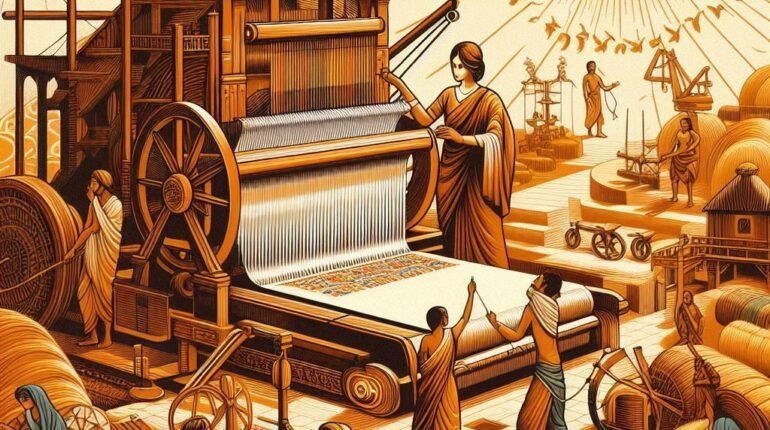
For centuries, handloom and cottage industries have been the backbone of rural economies, sustaining millions of artisans and craftsmen. These industries represent more than just economic activity; they embody tradition, culture, and sustainability. However, with the rise of mechanization, globalization, and mass production, handloom and small-scale industries face an existential crisis. The question remains: Will these industries revive with innovation and government support, or will they fade into history?
The Rich Legacy of Handloom and Cottage Industries
Handloom and cottage industries have played a significant role in shaping civilizations across the world. In India, for example, the handloom industry dates back thousands of years, producing world-famous fabrics like Banarasi silk, Kanjeevaram, Pashmina, and Khadi. Similarly, countries like China, Egypt, and Persia have a long tradition of handwoven textiles, pottery, and handmade crafts.
These industries have thrived on:
✔ Sustainability: They use natural fibers and traditional techniques with minimal environmental impact.
✔ Employment Generation: Millions of rural artisans, especially women, depend on these industries for their livelihood.
✔ Cultural Preservation: Every fabric, design, or craft carries a unique history, passed down through generations.
The Decline of Handloom and Cottage Industries
Despite their historical and cultural significance, these industries have suffered a major decline due to:
- The Rise of Mass Production
The Industrial Revolution led to the dominance of machine-made textiles and factory-produced goods, making handcrafted products seem expensive and time-consuming in comparison.
- Cheap Imports and Fast Fashion
Globalization has flooded markets with cheap, synthetic, and mass-produced textiles. Countries like China and Bangladesh dominate the global textile market with lower production costs, pushing traditional weavers and artisans out of business.
- Lack of Technological Advancement
Most small-scale artisans still rely on traditional tools and manual labor. Without access to modern technology, they struggle to compete with large-scale industries that benefit from automation.
- Declining Interest Among Younger Generations
Many young artisans are leaving the profession due to financial instability and a lack of growth opportunities, leading to a decline in skilled craftsmanship.
- Middlemen Exploitation
While handloom and cottage industries hold great economic potential, artisans often receive only a small fraction of the profit. Middlemen and large retailers take advantage of their lack of direct market access.
The Road to Revival: Can These Industries Be Saved?
Despite the challenges, handloom and cottage industries can be revived with the right strategies. Some promising solutions include:
- Government Policies and Support
Governments must create policies that protect and promote handloom industries. In India, initiatives like the “Make in India” campaign, subsidies for weavers, and the promotion of Khadi have provided some relief. Similar efforts must be expanded globally.
- E-Commerce and Digital Empowerment
With the rise of digital marketplaces, artisans can now sell directly to consumers worldwide. Platforms like Amazon, Etsy, and social media allow craftsmen to bypass middlemen and earn fair wages.
- Sustainable and Ethical Fashion Movement
Consumers are becoming more conscious of sustainable and ethical shopping. Handloom textiles, being eco-friendly and handcrafted, have a strong market among those who reject fast fashion and synthetic materials.
- Skill Development and Innovation
Governments and NGOs should invest in skill development programs that train artisans in modern techniques while preserving traditional craftsmanship. The fusion of traditional designs with contemporary fashion can attract a wider audience.
- Encouraging Youth Participation
Creating financial stability and showcasing the artistic and entrepreneurial opportunities within these industries can encourage younger generations to carry forward their ancestral legacy.
Conclusion: The Future is in Our Hands
The future of handloom and cottage industries lies in a balance between tradition and innovation. If governments, businesses, and consumers actively support these industries, they can not only survive but thrive in the modern world.
Instead of extinction, a revival is possible—one that values craftsmanship, sustainability, and ethical production. It is up to us to make conscious choices that preserve these industries for future generations.
“Handloom is not just fabric; it is a story woven with threads of history, culture, and human touch. Let’s ensure this story continues!”
